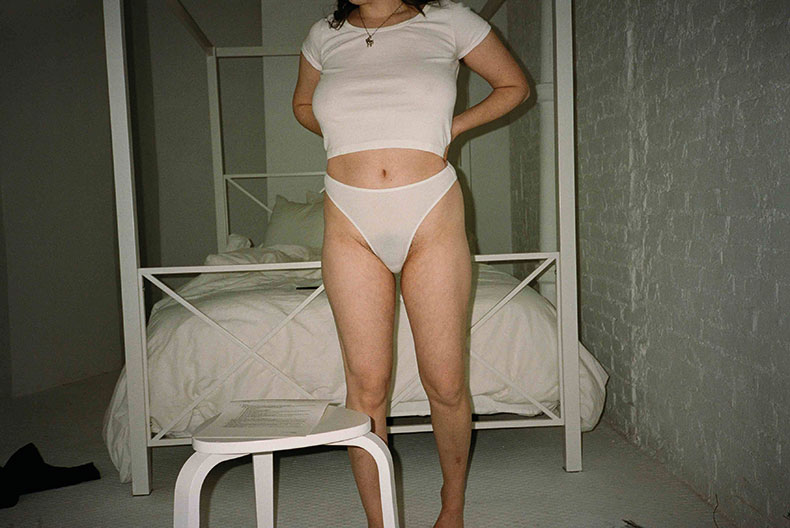From the May 2023 issue of Apollo. Preview and subscribe here.
In Lisa Taddeo’s story ‘Beautiful People’ (2018), a painting by Eric Fischl is instrumentalised in a series of exploitative transactions masquerading as romantic gestures. The Welcome (2007) hangs on a lumpy salmon-coloured wall in a set dresser’s bedroom: ‘The painting had come to her the way those things occasionally do. From rich men with bathwater scrotums.’ The set dresser in turn offers the painting for sale as a gambit to lure a film star into her orbit, her kitchen (where he cooks osso buco and does the washing up) and her bed. When he transfers money for The Welcome, the sum is three quarters of what she expected. Who has more successfully played whom?
Taddeo’s heroine hovered in mind while reading Sophia Giovannitti’s Working Girl: On Selling Art and Selling Sex (Verso, 2023). Both are young white women scraping by in New York, navigating a city pitched to the needs of the ultra-wealthy, and the sexual politics generated by that dynamic. Giovannitti is an artist. At a certain point after graduating college she transitioned ‘from girl to prostitute’ – a line of work that brought her enough time to make art, read theory and write a memoir, and enough money to live in New York without generational wealth. I imagine Giovannitti would chide Taddeo’s heroine for her failure to recognise a transactional relationship and draw up the lines of engagement accordingly.

RECORD 7, from Incall; Study 2; Contract, performed by Sophia Giovannitti at DUPLEX, New York, in 2022
Art and sex – according to a romanticised view – are the product of passion and should not be commodified. There is the suggestion of a causal relationship here: that a thing done for love does not merit remuneration on the same terms as a thing done to satisfy a contractual obligation. Herein lies the basis for exploitative practices within the art world that are as egregious as they are pervasive. Some of these practices are outlined in research conducted by the British artist-run organisation Industria. Their report is titled Structurally F~cked and I think it is no coincidence that Industria reached for the language of sexual exploitation to describe artists’ pay and working conditions.
Giovannitti describes the art and sex industries as ‘capital’s stress points: two industries saturated in hyper-capitalist relations while also existing on the outskirts of the formal economy’. She enumerates material similarities between the two fields, including ‘wildly stratified price points, scams, blurred legal lines and exploitation’, as well as the convention of denigrating an artist motivated by commercial gain as having ‘prostituted’ themselves.
While Giovannitti draws comparisons between sex work and the commercial gallery sector (and indicates a broad overlap in the client base served by both industries) Structurally F~cked looks at the public sector. Data gathered from more than 100 contributors outlines a status quo in which artists are expected to work for low (or no) money, even when labouring on exhibitions and commissions for Britain’s grandest institutions. The report cites ‘a major solo commission at an extra large institution in London’, which had a production budget of £120,000. ‘The artist fee for this full-time 2 year project was £6000, which breaks down as an hourly rate of £1.56.’ This was not an isolated case: larger projects and institutions did not mean better pay.
The unspoken assumption was that artists working at this scale in the public sector would be compensated by the market. Institutions understood their relationship with the artist to be mediated by the artist’s relationship with a commercial gallery. But not all artists have commercial representation, and not all art practices are well suited to it. (A case in point: only two of the four artists nominated for the last Turner Prize are represented by a commercial gallery.) The reality outlined by Industria is that many artists work at far below minimum wage, and that such exploitation is built into the way public-sector projects are budgeted. To a greater or lesser extent, artists are still expected to work for love rather than fair pay.
Scenes From Late Paradise: The Welcome (2007), Eric Fischl. Photo: © Eric Fischl/Artist Rights Society (ARS), New York; courtesy the artist and Skarstedt, New York.
In the final chapter of Working Girl, Giovannitti prepares for her performance Failure as Form (2022), staged at the Bowery Hotel. She proudly lists what she paid for the penthouse suite ($3,000), the martinis and wine bought for the opening, the hotel room she covered for the photographer and the fees she offered everyone who collaborated on the project. And she baldly outlines how all this was possible – the perfectly realised project, the fair pay and the time she could take to develop work: ‘because I was fucking for my money.’
The foreground of Fischl’s The Welcome is bisected by the back of an old woman: tanned and fleshy, with stripes of pale skin describing an absent thong bikini. A wealthy-looking man strides up the frothing beach, and her body turns – a little too eagerly – to greet him. While Giovannitti is upfront about the privilege being white, educated and attractive offers her as a sex worker, I worry that she ignores the premium of youth. In matters of both art and sex, older women find themselves overlooked. The idea that an emerging artist’s trajectory leads inevitably on and up is a fallacy peddled by those who promote art as an asset class. Industria’s report instead indicates that exploitative practices are a career-long phenomena – that artists can become trapped in an ever-emerging state. What happens when you come up against the ageism of the art and sex industries alike? That’s when you’re properly f~cked.
From the May 2023 issue of Apollo. Preview and subscribe here.
